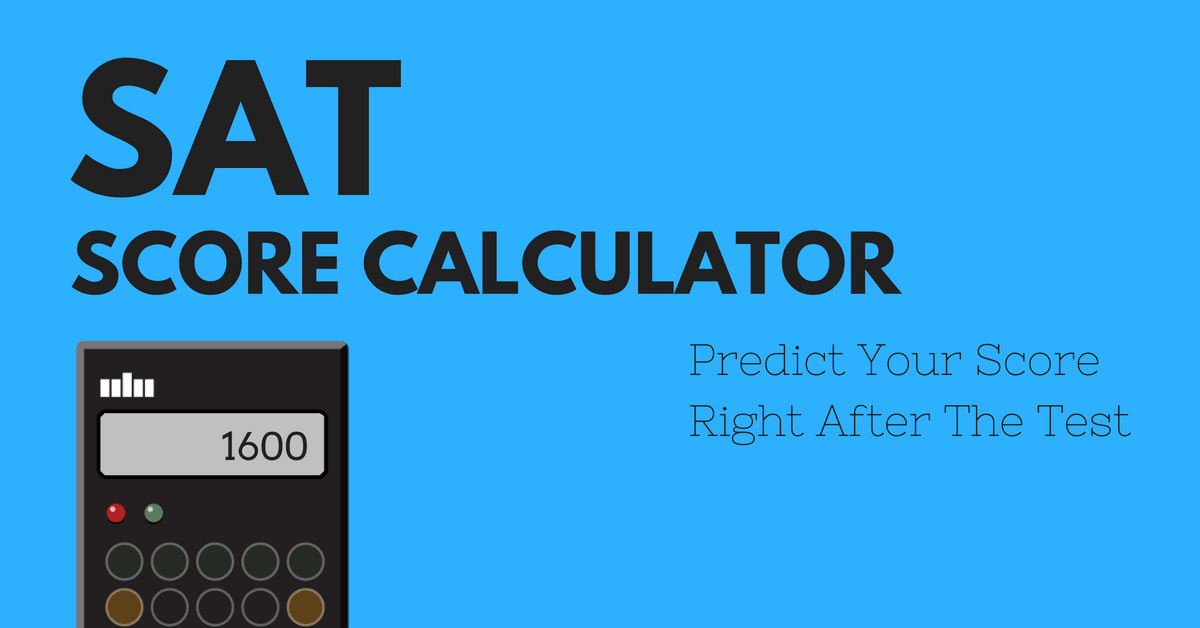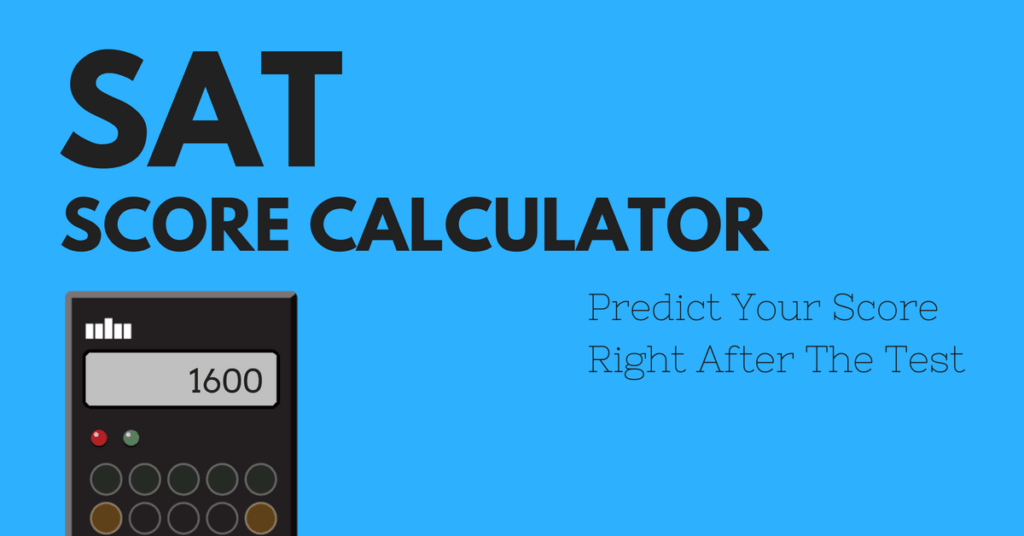Physical Address
304 North Cardinal St.
Dorchester Center, MA 02124
Physical Address
304 North Cardinal St.
Dorchester Center, MA 02124

Do you want to learn how to calculate SAT score? If yes, then the step-by-step process we have discussed in this article will guide you. We have also included other pieces of important information about SAT test scores to make this article as comprehensive as possible.
Although divided into four sections, the SAT is graded in only two categories: the math section and the section for evidence-based reading and writing.
The maximum score for both sections is 800. Add these two subscores to get a maximum score of 1600. The parts of the mathematics test are divided into “mathematics with a calculator” and “mathematics without a calculator”.
The writing/reading part includes a reading test and a writing and language assessment. It may be difficult to gauge your progress in these sections without understanding how the test scales and how it is converted.

After you have been able to see your SAT score sheet, you can follow the steps here to interpret it. SAT score reports come with so much information that it can be difficult to know where to start. The rating ranges and benchmarks described below will help you put your assessment into perspective.
Extra points and cross-test results can help you identify your strengths and weaknesses and understand which skills you need to practice more.
However, the result sheet score report doesn’t tell you whether you passed because there is no score that is stipulated to be the passing score.
| Score Structure | College & Career Readiness Benchmark | |
| Total score | 400-1600 | 1050 |
| Evidence-Based Reading and Writing Section | 200-800 | 480 |
| Math Section | 200 | 530 |
Tests don’t measure exactly what you know, and scores can be affected by many factors. After all, no two days are the same, and if you take the SAT 3 times a week or once a week for a month, your results will be different. For this reason, it is useful to think of each score as a range from low to high.
The score range shows how much your score might change when you retest if your skill level remains the same. Typically, evidence-based reading and writing and math scores are about 30-40 points above or below your actual ability.
Colleges recognize this, and in a bid to calculate SAT score properly provide a suitable route to put this picture into context.
The SAT College and Career Readiness Benchmark scores reflect evidence-based benchmark scores for the reading, writing, and math sections. Students whose scores meet the criteria for each section are considered college and career ready.
In other words, if your scores are at or above the benchmark, you’ll be ready to study when you graduate from high school. You can also use detailed feedback in your online grade report or discuss your grades with a school counsellor to see which skills need the most improvement.
Remember, these benchmarks are designed to help you better prepare for life after high school and should not prevent you from attending college or taking challenging courses.
Tests are scored on this scale to keep tests in a standardized form across multiple iterations and test versions.
When it comes to how difficult the content of the test is, each test is different, and the scale scoring system tries to interpret and correct this. The SAT-scaled scoring also means that all tests are the same in terms of difficulty
Because each test has subtle differences, not every test can be scaled to the same initial baseline. This means that sometimes skipping a question can result in a 10-mark gap, while other times it can result in a 30-mark gap in that section.
Sometimes missing a question doesn’t matter and your total score is 800, regardless!
Before we dive into how to calculate SAT score in a step-by-step process, we have provided an SAT score conversion table to make this process easier as you will need to refer to it at some point.
Also Read: Best 10 Colleges That Don’t Require SAT or ACT
The College Board has not released details about the process it takes to ascertain scale scores.
If converting your scores is something you would want to do, use the raw/scaled score conversion table. These forms vary slightly between tests, so try using the form that comes with the practice test you want.
Below is the conversion table provided by the College Board for SAT Practice Test #1. Keep in mind that the actual test administration form will vary, but this is a good way to get an idea of your likely results.
| RAW SCORE | Math Section Score | Reading Test Score | Writing & Language Test Score |
| 0 | 200 | 10 | 10 |
| 1 | 200 | 10 | 10 |
| 2 | 210 | 10 | 10 |
| 3 | 230 | 11 | 10 |
| 4 | 240 | 12 | 11 |
| 5 | 260 | 13 | 12 |
| 6 | 280 | 14 | 13 |
| 7 | 290 | 15 | 13 |
| 8 | 310 | 15 | 14 |
| 9 | 320 | 16 | 15 |
| 10 | 330 | 17 | 16 |
| 11 | 340 | 17 | 16 |
| 12 | 360 | 18 | 17 |
| 13 | 370 | 19 | 18 |
| 14 | 380 | 19 | 19 |
| 15 | 390 | 20 | 19 |
| 16 | 410 | 20 | 20 |
| 17 | 420 | 21 | 21 |
| 18 | 430 | 21 | 21 |
| 19 | 440 | 22 | 22 |
| 20 | 450 | 22 | 23 |
| 21 | 460 | 23 | 23 |
| 22 | 470 | 23 | 24 |
| 23 | 480 | 24 | 25 |
| 24 | 480 | 24 | 25 |
| 25 | 490 | 25 | 26 |
| 26 | 500 | 25 | 26 |
| 27 | 510 | 26 | 27 |
| 28 | 520 | 26 | 28 |
| 29 | 520 | 27 | 28 |
| 30 | 530 | 28 | 29 |
| 31 | 540 | 28 | 30 |
| 32 | 550 | 29 | 30 |
| 33 | 560 | 29 | 31 |
| 34 | 560 | 30 | 32 |
| 35 | 580 | 30 | 32 |
| 36 | 580 | 31 | 33 |
| 37 | 590 | 31 | 34 |
| 38 | 600 | 32 | 34 |
| 39 | 600 | 32 | 35 |
| 40 | 610 | 33 | 36 |
| 41 | 620 | 33 | 37 |
| 42 | 630 | 34 | 38 |
| 43 | 640 | 35 | 39 |
| 44 | 650 | 35 | 40 |
| 45 | 660 | 36 | — |
| 46 | 670 | 37 | — |
| 47 | 670 | 37 | — |
| 48 | 680 | 38 | — |
| 49 | 690 | 38 | — |
| 50 | 700 | 39 | — |
| 51 | 710 | 40 | — |
| 52 | 730 | 40 | — |
| 53 | 740 | — | — |
| 54 | 750 | — | — |
| 55 | 760 | — | — |
| 56 | 780 | — | — |
| 57 | 790 | — | — |
| 58 | 800 | — | — |
Also Read: What are the math classes in College?
The steps we have discussed below are some of the simple steps you need to take to accurately calculate SAT score.
Simply put, the number of questions you answer correctly results in your “raw score”.
You get one point for each question you get right. Points are not deducted for wrong answers, so you must always answer all questions, even if you decide to guess them.
Evidence-based reading and writing consist of two subsections: Reading and writing and Language. First, the basic scores for each subsection were determined separately.
What is the maximum possible raw score for these parts? It all depends on the number of questions contained in each section. The math section is made up of 58 questions, so your maximum possible starting score is 58.
There are 52 questions in the reading, so 52 is the highest possible raw score. Writing and Language consist of 44 questions, so the ideal raw score is also 44.
Let’s assumed you add up the scores you get for the correct answers and you get the raw scores below:
The next thing you need to know is to convert these raw scores into scaled scores.
Each SAT session is not 100% the same as any other test. To compensate for the difference, the College Board has changed the meaning of raw scores between test administrations.
They do this by converting raw scores into scaled scores from 200 to 800. If you took the SAT twice and got a raw math score of 44 both times, is possible that your scaled math score in March will be lower than it is in June, because the math part in June is more difficult than in March.
Your raw math scores are converted directly to corresponding scale scores. Your baseline reading, writing and language scores are combined into one total score on an Evidence-Based Reading and Writing.
To calculate SAT score, you need to use the table above to see how the scoring actually works.
First, find your raw Math score in the left column of the leaderboard, then read it to determine your scaled Math score. If you scored 44 in your Math raw score, you will have 650 as your scaled Math score.
Here you can combine scores in reading, writing, and language into Evidence-Based Reading and Writing Scores.
Bear in mind that we have two raw scores in the verbal section:
Convert them to the corresponding scale using the conversion table:
Take note that the scaled scoring in each of the following sections goes up to 40. This is because cross-test results can only be reported in a scale of 10-40. The next thing you need to do is to sum up your scaled scores.
The next thing you need to do is to multiply the result by 10.
710 is the score for the scaled Evidence-Based Reading and Writing Section. Another thing you should bear in mind is that the SAT has nothing to do with your Evidence-Based Reading and Writing Section Score.
Also Read: What Is A Good MCAT Score? | All You Need to Know
Finally, the next thing you need to do is, sum up your score in the scaled section to discover your composite score
With respect to the example in this section, we scored a 650 on the math section and a 710 on the evidence-based reading and writing section, so our total score on this SAT is 1360.
There is no simpler way on how to calculate SAT score apart from the one we have discussed in this article.